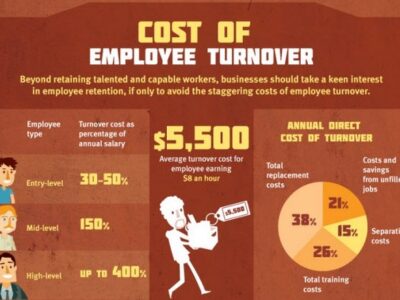You’ve been tasked with giving an important presentation at work. You’ll have to stand up and speak in front of all your coworkers, detailing your ideas for the upcoming project—but you have communication anxiety.
As you start giving your presentation, your palms get sweaty. You’re shaky, talk quietly, and the presentation ultimately doesn’t go as well as you’d hoped. That’s communication anxiety at work, and it can negatively impact your ability to communicate effectively.
In our latest podcast episode, Public Speaking Anxiety is Killing My Career, we spoke with Kit Pang—founder of BostonSpeaks, Harvard Business School Public Speaking Coach, and three-time TEDx Speaker Coach.
Throughout our discussion, we talked about communication apprehension, where it comes from, how it affects us in the workplace, and how to overcome it. One of Pang’s key points was the importance of sharing our experiences, saying:
“… Share an experience that everyone feels this way, because the worst thing is when people get into a loop, they feel like they’re the only ones getting in that loop… If we can normalize the experience, it’s a bonding moment.”
In this blog, we’re going to talk in-depth about communication anxiety, its causes, symptoms, how it holds us back, and strategies for overcoming it.
Understanding Workplace Communication Anxiety
First, let’s start by trying to understand workplace communication anxiety and where it comes from. Anxiety in conversation seems like it comes from nowhere, but there are identifiable causes and symptoms.
By looking at those, you can find out how your particular anxiety manifests and its origins. From there, you can more effectively manage and overcome it with appropriate strategies and techniques.
Symptoms
How can you identify anxiety, nervousness, and apprehension? By knowing the signs. With that knowledge, you can gain greater awareness of your own anxiety. Here are some of the most common symptoms:
Not being able to speak up in group settings. Struggling to speak up in situations like meetings is one of the most common symptoms of anxiety. Ideally, you should feel confident in making yourself heard.
Nervousness to express your opinion. Many people struggle to voice their opinions, especially at work. This is a sign of anxiety, and it can hold you back. Being able to express your thoughts is key in the workplace.
Low self-esteem. This is something that many struggle with, and it’s often an indicator of anxiety. Low self-esteem can make you hesitant to speak your mind, create imposter syndrome, and keep you from reaching your full potential.
Negative self-talk. If you find that the voice in your head is saying things like, “This presentation won’t go well,” or, “If I speak up, I’ll get embarrassed,” you’ve experienced negative self-talk. This is one of the strongest signs of anxiety at work.
Physical manifestations like sweaty palms and shaky hands. The most obvious symptoms of anxiety are the physical ones. These are hard to miss, and they’re a reliable indicator of anxiety.
Causes
Once you understand your symptoms, you can look deeper at the causes. Identifying triggers, past experiences, fears, and more that contribute to your anxiety will help you better understand and address it.
Fear of judgment. As humans, we want to be liked by those around us. This can create a fear of judgment, and if you have a strong fear of judgment, it can lead to communication anxiety in the workplace that limits your performance.
Lack of confidence and imposter syndrome. Struggling with confidence and a fear you aren’t good enough for your job often results in anxiety. This anxiety can undermine your confidence, creating a loop that makes your anxiety worse over time.
Past negative experiences. We are all a product of our past, and a past negative experience can result in anxiety. For example, say you botched your first big presentation. That can create a lot of fear and apprehension around future presentations.
Toxic work environment. As with many issues in the workplace, a toxic environment can be a cause of anxiety. Toxic environments create fear and distrust, and limit communication–all of which can contribute to anxiety.
Social anxiety. Social anxiety is relatively common, and it can contribute to communication-related anxieties in the workplace. If you find yourself struggling in social scenarios (in and outside of work), you may have social anxiety.
How Fear of Communication Holds You Back
Before moving on to strategies, we’re briefly going to cover how fear of communication holds you back. Understanding the effect fear has is an important step to overcoming it.
Fear creates apprehension, hesitation, and uncertainty. These things can slow you down, make you second guess yourself, and prevent you from taking advantage of opportunities.
For example, say you have the opportunity to undergo training for a new skill set. If you have communication anxiety, you may say no and pass up the opportunity to avoid the embarrassment or judgment you fear.
Fear can also impact team dynamics, collaboration, and productivity. The most productive teams are those that communicate openly and share their ideas, and fear of communication limits that.
Emotional Intelligence Team Building can be a great help here. It helps you learn more about you, your emotions, and those around you. This can help ease anxiety, as well as better understand how to address and avoid it.
Strategies to Overcome Communication Apprehension
Now, let’s answer the big question—how to deal with communication apprehension. Overcoming communication anxiety can feel impossible, but it’s completely doable with the right strategies. So let’s review some of the most effective ones.
Build Your Skills
A great place to start is by building your skills. Soft skills such as active listening, assertiveness, and public speaking can help you become more confident and comfortable when it comes to communication in the workplace.
Team building events are a good way to improve your social skills at work. Events like Breaking Barriers and Effective Communication hone in on key communication skills and can help you improve, ultimately reducing your anxiety.
Another option is simply to practice. Getting more experience speaking, communicating effectively, and actively listening can help alleviate your fears and become more comfortable speaking and communicating at work.
Practice Mindfulness
Mindfulness is another effective strategy for dealing with communication apprehension. Being mindful of your body and emotions can help you better identify triggers, patterns, and behaviors that contribute to your anxieties.
There are a multitude of mindfulness techniques you can utilize as well, such as deep breathing, meditation, and positive self-talk. These techniques can help you calm down, think more positively, and be more in the moment.
That said, it’s important to note that developing your skills and practicing mindfulness are only part of the process. Pang emphasized this in our discussion when he said:
“If you want to get over your communication anxiety and become more confident, practicing more, learning more speaking skills, and having techniques to calm yourself down is the slowest and most ineffective way… That’s because you never address how you think about your speaking situation in the first place… You never address how you’re looking or thinking or perceiving the situations in the first place.”
So you should utilize these strategies, but remember that they are not an immediate or permanent solution on their own.
Get Gradual Exposure
As with many anxieties and fears, gradual exposure can be a very effective way to overcome them. Regular practice and exposure to challenging communication scenarios help you overcome fears, develop confidence, and improve your social skills in the workplace.
Start with small, low-pressure communication tasks to build confidence and slowly work your way up. Starting with the most intense situations can potentially have a negative impact, so start small and go from there.
This is best done however in a positive workplace that can support you. Employee engagement activities can help shape a healthier environment that will make gradual exposure easier and less stressful.
Find a Mentor
Lastly, having mentors to help you is key. Whether they are leaders, colleagues, or mental health professionals, having support makes everything easier. Just having someone to practice your interaction skills with and get pointers from can make a huge difference.
A good leader or mentor can help deepen and elevate employee connection, which helps alleviate anxiety through stronger support. They can also help prevent toxic work environments that hinder your progress.
Mentors also can show that communication anxiety is something everyone deals with at some point and encourage open communication. We touched on this in our conversation with Pang. He said:
“So what I’m saying as a manager, how can you share examples of yourself? Maybe the last time you had perfectionism, the last time you felt imposter syndrome, the last time you got nervous speaking—your sharing will help your team share more too.”
If your leaders and mentors in the workplace are struggling with their support abilities, consider a leadership event like Team Leadership DNA. These events can help leaders improve their skills, allowing them to better support their employees in need.
Creating an Anxiety-Free Workplace Culture
Communication anxiety in the workplace is incredibly common, and dealing with it is essential if you and your employees want to reach your fullest potential. While that can seem like a difficult task, the right strategies and approach make it possible.
Whether you’re an employee or a manager, you should understand that company culture starts at the top. Leaders can create a culture and environment that enables employees to express themselves without anxiety.
By encouraging open communication, active listening, skill growth, mindfulness, and mentorship, it’s possible to create a healthy work environment that minimizes anxiety and helps employees overcome their fears.
Facilitating events such as professional development, training, and Strengths Finder can help you create an anxiety-free workplace. At TeamBonding, we put a fun spin on events that makes them even more impactful.
We have a wide selection of events that are perfect for dealing with anxiety, as well as an intimate understanding of anxiety in the workplace, how it works, and how to overcome it. So get in touch with us and make your workplace anxiety a thing of the past!















